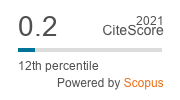Utilidad de una escala de riesgo para identificar pacientes con disglucemia
Resumen
Objetivo: evaluar el desempeño de la escala de Bang y otros, para identificar individuos con disglucemia, en una población cubana laboralmente activa.
Métodos: se realizó un estudio transversal en 2 902 pacientes, fueron clasificados en portadores o no de disglucemia, a través de las pruebas de glucemia en ayunas, de tolerancia a la glucosa y hemoglobina glucosilada. Se determinó la frecuencia de factores de riesgo de diabetes mellitus tipo 2 comprendidos en la escala de Bang y otros, y en el proceder enfocado en factores de riesgo de American Diabetes Association. Se determinó sensibilidad, especificidad, valor predictivo positivo, valor predictivo negativo y Odds Ratio de ambas estrategias. En ambos se calculó el área bajo la curva operativa del receptor.
Resultados: se encontró relación entre cada uno de los factores de riesgo previstos en ambos procederes con el diagnóstico de disglucemia. Se encontró sensibilidad de 96,5 % y 79,9 %; especificidad de 20,9 % y 59,1 %; valor predictivo positivo de 10,7 % y 16,1 %; valor predictivo negativo de 98,4 % y 96,8 %; OR de 7,33 y 6,76 y área bajo la curva 0,77 y 0,79 para la escala de Bang y otros, y el procedimiento enfocado en factores de riesgo, respectivamente.
Conclusiones: ambos procederes identificaron de forma aceptable el grupo de pacientes con disglucemia.
Referencias
Bess Constanten S, Alonso Alomá I, Torres Vidal RM, López Nistal LM, Sánchez Sordo E, Martínez Morales MÁ, et al. Anuario Estadístico de Salud 2016. La Habana: Ministerio de Salud Pública; 2017 [citado 13 mar 2017]. Disponible en: http://files.sld.cu/dne/files/2017/05/Anuario_Estad%C3%ADstico_de_Salud_e_2016_edici%C3%B3n_2017.pdf
Organización Mundial de la Salud. Informe Mundial sobre la Diabetes: Resumen de orientación. Geneva: World Health Organization; 2016 [citado 13 mar 2017]. Disponible en: http://apps.who.int/iris/bitstream/10665/204877/1/WHO_NMH_NVI_16.3_spa.pdf?ua=1
Han Cho N, Whiting D, Forouhi N, Guariguata L, Hambleton I, Li R, et al. Atlas de la DIABETES de la FID 2015 [cited 2017 Mar 13]. Available from: http://www.diabetesatlas.org/
Lamparter J, Raum P, Pfeiffer N, Peto T, Hohn R, Elflein H, et al. Prevalence and associations of diabetic retinopathy in a large cohort of prediabetic subjects: the Gutenberg Health Study. J Diabetes Complications [Internet]. 2014 [cited 2017 Mar 13];28(4):[about 4 p.]. Available from: http://www.sciencedirect.com/science/article/pii/S1056872714000506?via%3Dihub
McGinn JT, Shariff MA, Bhat TM, Azab B, Molloy WJ, Quattrocchi E, et al. Prevalence of Dysglycemia Among Coronary Artery Bypass Surgery Patients with No Previous Diabetic History. Journal of Cardiothoracic Surgery [serial on the Internet]. 2011 [cited 2017 Mar 13];6(104):[about 5 p.]. Available from: http://www.ncbi.nlm.nih.gov/pmc/articles/PMC3178483/
Xing FY, Neeland IJ, Gore MO, Ayers CR, Paixao AR, Turer AT, et al. Association of prediabetes by fasting glucose and/or haemoglobin A1c levels with subclinical atherosclerosis and impaired renal function: observations from the Dallas Heart Study. Diab Vasc Dis Res [serial on the Internet]. 2014 [cited 2017 Feb 14];11(1):[about 5 p.]. Available from: http://journals.sagepub.com/doi/pdf/10.1177/1479164113514239
Group DPPR. Reduction in the Incidence of Type 2 Diabetes with Lifestyle Intervention or Metformin. New England Journal of Medicine [Internet]. 2002 [cited 2017 Mar 13];346(6):[about 7 p.]. Available from: http://www.nejm.org/doi/full/10.1056/NEJMoa012512
Roumen C, Corpeleijn E, Feskens EJM, Mensink M, Saris WHM, Blaak EE. Impact of 3-year lifestyle intervention on postprandial glucose metabolism: the SLIM study. Diabetic Medicine [Internet]. 2008 [cited 2017 Mar 13];25(5):[about 8 p.]. Available from: http://dx.doi.org/10.1111/j.1464-5491.2008.02417.x
Tuomilehto J, Lindström J, Eriksson JG, Valle TT, Hämäläinen H, Ilanne-Parikka P, et al. Prevention of Type 2 Diabetes Mellitus by Changes in Lifestyle among Subjects with Impaired Glucose Tolerance. New England Journal of Medicine [Internet]. 2001 [cited 2017 Mar 13];344(18):[about 6 p.]. Available from: http://www.nejm.org/doi/full/10.1056/NEJM200105033441801
2. Classification and Diagnosis of Diabetes. Diabetes Care [Internet]. 2017 [cited 2017 Feb 14];40(Supplement 1):[about 3 p.]. Available from: http://care.diabetesjournals.org/content/diacare/40/Supplement_1/S11.full.pdf
Bang H, Edwards AM, Bomback AS, Ballantyne CM, Brillon D, Callahan MA, et al. A patient self-assessment diabetes screening score: development, validation, and comparison to other diabetes risk assessment scores. Annals of Internal Medicine [Internet]. 2009 [cited 2017 Feb 14];151(11):[about 5 p.]. Available from: http://www.ncbi.nlm.nih.gov/pmc/articles/PMC3633111/
Lindström J, Tuomilehto J. The Diabetes Risk Score. A practical tool to predict type 2 diabetes risk [Internet]. 2003 [cited 2017 Mar 13];26(3):[about 3 p.]. Available from: http://care.diabetesjournals.org/content/diacare/26/3/725.full.pdf
Alberti KGMM, Zimmet PZ. Definition, diagnosis and classification of diabetes mellitus and its complications. Part 1: diagnosis and classification of diabetes mellitus. Provisional report of a WHO Consultation. Diabetic Medicine [serial on the Internet]. 1998 [cited 2017 Mar 13];15(7):[about 3 p.]. Available from: http://dx.doi.org/10.1002/(SICI)1096-9136(199807)15:7<539::AID-DIA668>3.0.CO;2-S
World Health Organization. Use of Glycated Haemoglobin (HbA1c) in the Diagnosis of Diabetes Mellitus: Abbreviated Report of a WHO Consultation. Geneva 2011 [cited 2017 Mar 13]. Available from: http://www.who.int/diabetes/publications/report-hba1c_2011.pdf
Sathish T, Kannan S, Sarma PS, Thankappan KR. Achutha Menon Centre Diabetes Risk Score: A Type 2 Diabetes Screening Tool for Primary Health Care Providers in Rural India. Asia-Pacific journal of public health / Asia-Pacific Academic Consortium for Public Health [Internet]. 2015 [cited 2017 Mar 13];27(2):[about 10 p.]. Available from: http://www.ncbi.nlm.nih.gov/pmc/articles/PMC4573642/
Katulanda P, Hill NR, Stratton I, Sheriff R, De Silva SDN, Matthews DR. Development and validation of a Diabetes Risk Score for screening undiagnosed diabetes in Sri Lanka (SLDRISK). BMC Endocrine Disorders [Internet]. 2016 [cited 2017 Mar 13];16:[about 8 p.]. Available from: http://www.ncbi.nlm.nih.gov/pmc/articles/PMC4960842/
Casagrande SS, Cowie CC, Fradkin JE. Utility of the U.S. Preventive Services Task Force Criteria for Diabetes Screening. American journal of preventive medicine [serial on the Internet]. 2013 [cited 2017 Feb 14];45(2):[about 5 p.]. Available from: http://www.ncbi.nlm.nih.gov/pmc/articles/PMC3752602/
Cagliero E. Diabetes and Long-Term Complications. En: Jameson JL, de Kretser DM, Marshall JC, De Groot LJ. Endocrinology: Adult and Pediatric (7th Ed.). Philadelphia: W.B. Saunders; 2016.p.898-906.
Enlaces refback
URL de la licencia: http://creativecommons.org/licenses/by-nc-sa/3.0/





 La revista es de acceso abierto y gratuito.
La revista es de acceso abierto y gratuito.